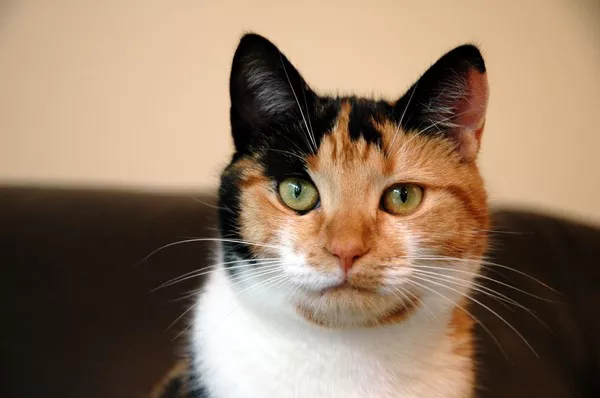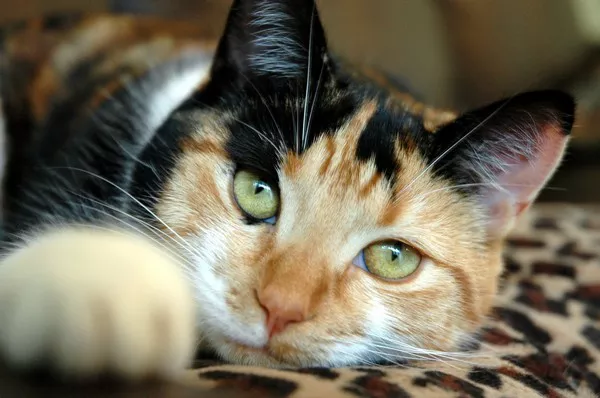Cats, known for their independent and discerning nature, thrive in various environments, including the comforts of indoor living. While indoor cats benefit from the safety and shelter provided by their homes, their dietary needs require careful attention to ensure they enjoy a healthy and fulfilling life. In this comprehensive guide, we delve into six crucial diet recommendations tailored to meet the specific needs of indoor cats, addressing factors such as nutrition, hydration, weight management, and overall well-being.
Understanding the Unique Needs of Indoor Cats
Indoor cats lead a lifestyle distinct from their outdoor counterparts, and as such, their dietary requirements differ. Recognizing the following key aspects of indoor cat living is essential for tailoring an optimal diet:
Reduced Physical Activity: Indoor cats generally have less opportunity for physical exercise compared to outdoor cats. Limited space and fewer stimuli can contribute to a more sedentary lifestyle, making weight management a crucial consideration.
Limited Access to Natural Diet: Unlike outdoor cats that may supplement their diet with grass, insects, or small prey, indoor cats rely solely on the food provided by their owners. Ensuring a nutritionally balanced diet becomes paramount in meeting their dietary needs.
Hydration Challenges: Indoor cats may face challenges in maintaining adequate hydration levels, especially if their diet consists primarily of dry kibble. Unlike outdoor cats that can access natural water sources, indoor cats may not drink enough water, impacting their overall health.
Environmental Enrichment: Indoor cats thrive on mental stimulation and environmental enrichment. Including interactive feeding methods and varied textures in their diet can enhance their overall well-being and prevent boredom-related behaviors.
Now, let’s explore six diet recommendations tailored to address these specific needs and ensure the optimal health of indoor cats.
1. High-Quality, Balanced Nutrition
The foundation of a healthy diet for indoor cats is providing high-quality, balanced nutrition. Opt for commercially available cat foods formulated to meet the specific needs of indoor cats. Look for options that are labeled as “complete and balanced” and are designed to support the life stage of your cat, whether it’s a kitten, adult, or senior.
Key Components of a Balanced Cat Diet Include:
Protein: Cats are obligate carnivores, meaning they require a significant amount of animal-based protein. Look for cat foods with a high protein content derived from quality sources such as meat, poultry, or fish.
Healthy Fats: Essential fatty acids, such as omega-3 and omega-6, contribute to skin and coat health. Ensure that the cat food includes sources of healthy fats, like fish oil or poultry fat.
Vitamins and Minerals: A well-balanced cat diet should provide essential vitamins and minerals, including taurine, which is crucial for heart health, and calcium for bone health.
Limited Carbohydrates: While some carbohydrates can be included in cat food, they should not be the primary source of calories. Cats metabolize protein and fat more efficiently, and excessive carbohydrates can contribute to weight gain.
2. Weight Management and Portion Control
Maintaining a healthy weight is essential for the overall well-being of indoor cats, as they are prone to obesity due to reduced physical activity. Establishing a proper feeding routine with controlled portions can help prevent weight-related issues.
Tips for Weight Management:
Consult with a Veterinarian: Consult with your veterinarian to determine the ideal weight for your cat based on its breed, age, and health status. Veterinary guidance is crucial for developing a customized weight management plan.
Use Measured Portions: Avoid free-feeding and instead provide measured portions of cat food at scheduled meal times. This allows for better control of calorie intake.
Monitor Treats: Limit the use of treats and be mindful of their calorie content. Choose healthy, low-calorie treats or consider incorporating a portion of your cat’s regular food as a treat.
Regular Weigh-Ins: Schedule regular weigh-ins with your veterinarian to track your cat’s weight and adjust its diet accordingly. Sudden weight changes can indicate underlying health issues.
3. Hydration Promotion
Indoor cats may not drink sufficient water, making it crucial to promote hydration through their diet. While wet cat food contributes to moisture intake, additional strategies can be implemented to encourage adequate water consumption.
Hydration Promotion Strategies:
Wet Cat Food: Include wet or canned cat food in your cat’s diet. The higher moisture content in wet food helps maintain hydration levels and supports kidney health.
Water Bowls Placement: Place multiple water bowls in different areas of your home to make water easily accessible. Some cats prefer running water, so consider investing in a cat water fountain.
Broth or Water Additives: Consider adding low-sodium broth or water additives to your cat’s food to increase moisture content. This can be particularly beneficial for cats that are resistant to drinking plain water.
Hydration Monitoring: Monitor your cat’s water intake and consult with your veterinarian if you notice significant changes. Reduced water consumption can be a sign of underlying health issues.
4. Environmental Enrichment Through Feeding Methods
Indoor cats benefit greatly from environmental enrichment, and incorporating interactive feeding methods adds mental stimulation to their daily routine. These methods mimic natural hunting behaviors, promoting physical and mental exercise.
Interactive Feeding Methods Include:
Food Puzzle Toys: Invest in food puzzle toys that dispense small amounts of kibble when manipulated. This engages your cat’s problem-solving skills and provides mental stimulation.
Scatter Feeding: Scatter your cat’s dry food around the house or use puzzle feeders to encourage physical activity while eating. This simulates the hunting and foraging behaviors seen in outdoor cats.
Rotate Feeding Locations: Change the location of your cat’s food bowls regularly to introduce variety and keep them engaged. Cats enjoy novelty, and rotating feeding spots adds an element of excitement to mealtime.
Hide-and-Seek Treats: Hide small treats around the house for your cat to discover. This encourages exploration and stimulates their sense of smell.
5. Variety in Texture and Flavors
Adding variety to your cat’s diet in terms of textures and flavors not only keeps mealtime exciting but also ensures a more well-rounded nutritional intake. While maintaining consistency in the main cat food, introducing occasional changes can prevent dietary monotony.
Tips for Introducing Variety:
Rotational Feeding: Consider rotational feeding by incorporating different flavors or protein sources into your cat’s diet. This can be done gradually to prevent digestive upset.
Mixing Wet and Dry Food: If your cat primarily consumes dry kibble, consider mixing in a small amount of wet cat food to introduce variety and increase moisture content.
Homemade Treats: Occasionally, prepare homemade treats using cat-friendly ingredients. This adds a personal touch to your cat’s diet while ensuring the treats are nutritionally sound.
Observe Preferences: Pay attention to your cat’s preferences and adjust the variety based on its likes and dislikes. Some cats may have specific preferences for certain textures or flavors.
6. Regular Veterinary Check-ups and Nutritional Assessment
Regular veterinary check-ups are essential for monitoring your cat’s overall health and addressing any nutritional concerns. A veterinarian can provide personalized recommendations based on your cat’s individual needs and help detect early signs of potential health issues.
Key Aspects of Veterinary Check-ups:
Nutritional Assessment: During veterinary visits, discuss your cat’s diet and nutritional needs. A nutritional assessment can help determine if adjustments are needed based on your cat’s age, health status, and lifestyle.
Dental Health: Dental issues can impact a cat’s ability to eat comfortably. Regular veterinary check-ups include dental examinations, ensuring your cat’s oral health is maintained.
Weight Management Guidance: Veterinarians can offer guidance on weight management and dietary adjustments if needed. They can provide insight into the appropriate portion sizes and feeding frequencies.
Senior Cat Care: As cats age, their nutritional requirements may change. Regular check-ups allow for adjustments to cater to the evolving needs of senior cats.
Conclusion
Nourishing indoor cats requires a thoughtful approach that addresses their unique lifestyle and dietary needs. By implementing the six diet recommendations outlined in this comprehensive guide—focusing on balanced nutrition, weight management, hydration promotion, environmental enrichment, variety in texture and flavors, and regular veterinary check-ups—you can ensure that your indoor feline companion enjoys optimal health, vitality, and overall well-being. Remember that each cat is an individual with specific preferences and requirements, so observing your cat’s behavior and consulting with a veterinarian will help tailor its diet for a happy and healthy life indoors.






















